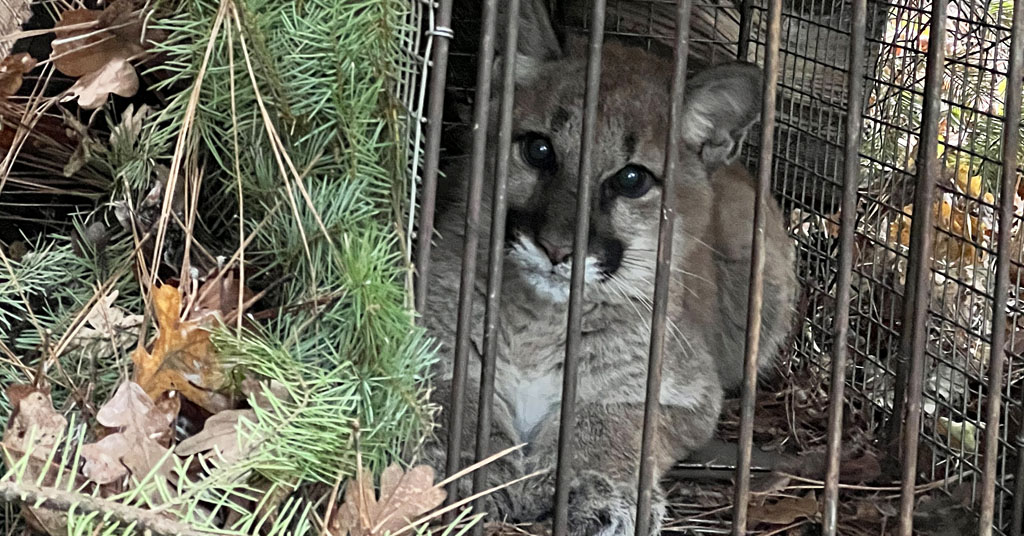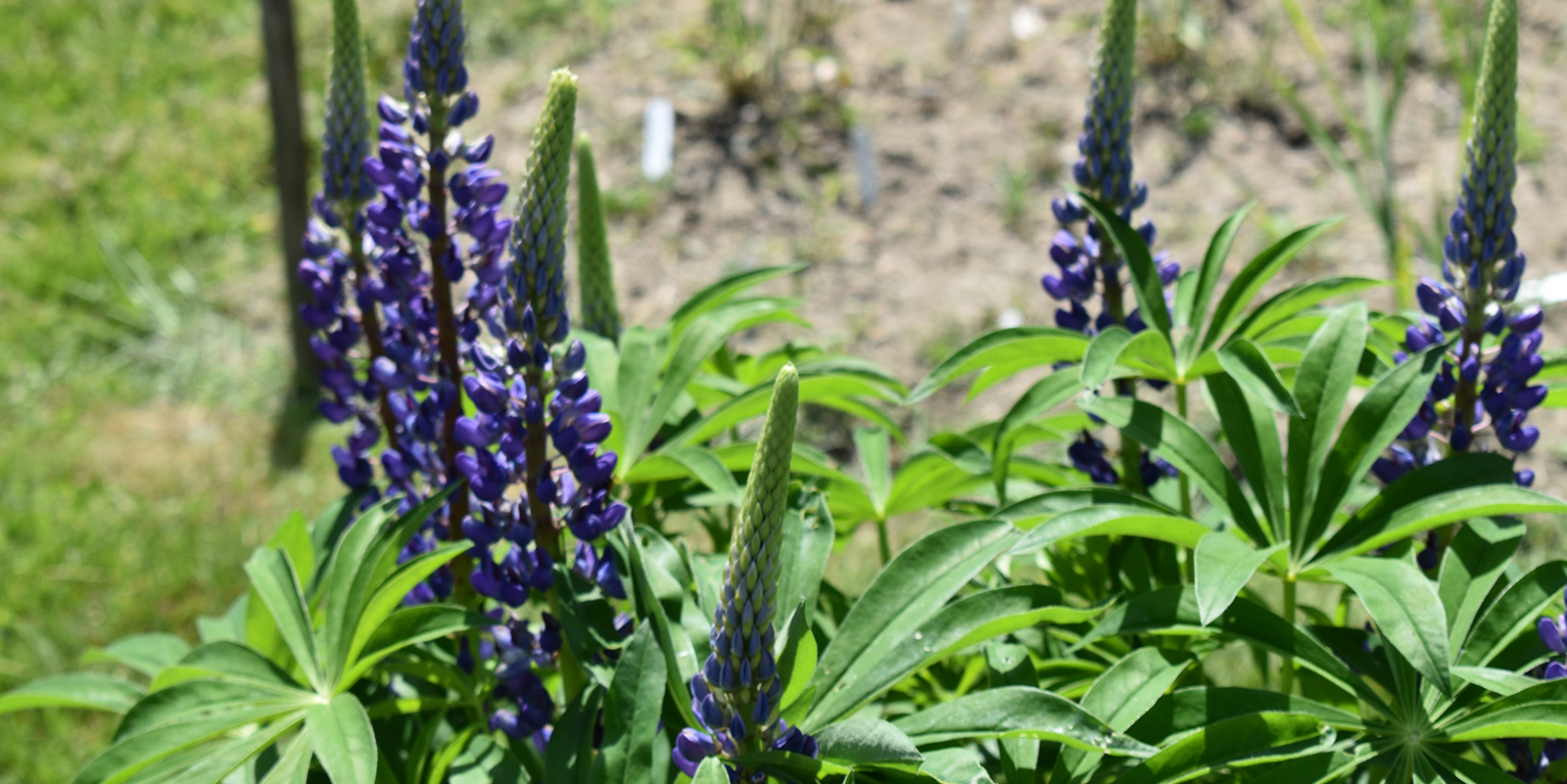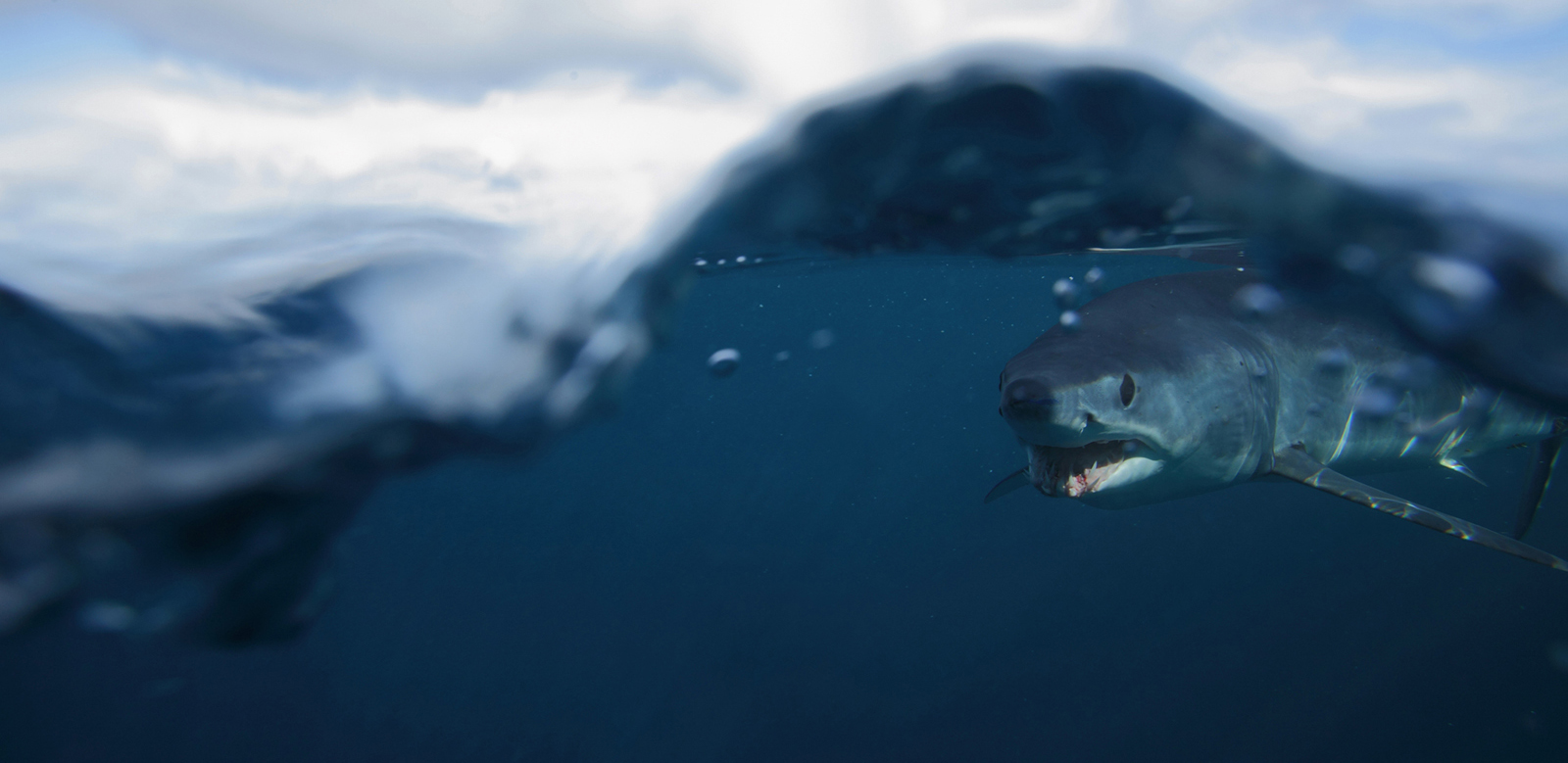Climate Change, Drought, Demographics Changing Way Lawn Care is Approached
April 25, 2022
RICHMOND, R.I. — Love them or hate them, lawns aren’t going to disappear from the New England landscape anytime soon. Caring for those islands of green can be as casual as an occasional mowing, or as involved as season-long programs that include watering, adding nutrients and eliminating weeds and insect pests.
University of Rhode Island Professor Bridget Ruemmele teaches several turf grass courses, including management and irrigation technology. Her research focus is turf grass improvement.
In drought-prone states such as Texas, where Ruemmele worked before coming to Rhode Island, many municipalities require homeowners to use xeriscaping, landscapes composed of plants that need much less water than traditional lawns.
Here in R.I., Ruemmele said lawns remain popular because they provide areas for recreation, and they are less likely to harbor ticks.
“One of the advantages, of course, of having at least some lawn near your buildings is, you don’t have to worry as much about deer ticks. That’s the big issue,” she said.
Recent hot, dry summers have resulted in watering restrictions in many towns, leaving lawns brown and stressed and prompting calls to URI from homeowners asking what they can do to counteract the effects of drought.
“We tend to have fairly regular rainfalls, but when there are droughts, the years we have droughts are when people all of a sudden go ‘Oh, maybe I should be concerned about it,’ and that’s when we get more calls and requests for information,” Ruemmele said.
Some homeowners are taking a more radical approach and reducing the sizes of their lawns. Young people may not be as interested in lawn maintenance and older couples who no longer have children at home don’t need the recreation space.
“As people seem to be aging, they’re more interested in not having as big of a lawn area,” Ruemmele said. “Some of these people who are reducing their lawn are spending hours and hours every week maintaining the alternative plants they put in, so it very much depends upon what kind of plants you decide to put in whether or not you’re going to be saving time, because if you’ve got a lawn, essentially, mow it once a week.”
The most widely-used turf grass species, Kentucky blue grass, is not considered to be drought-tolerant, although Ruemmele said the original blue grasses were much tougher than the varieties sold today.
“For years, people associated it with high maintenance and that’s because, back when we were less concerned about the environment, breeders developed grasses that responded to increased irrigation and increased fertility, whereas the more common types of Kentucky blue grasses…they are the ones that were adapted to whatever the environment threw at them, so they were able to tolerate periods of stress and that’s a major emphasis that turf breeders have gone back to.”
With nutrient runoff, much of it from fertilizers, polluting coastal waters, Ruemmele said municipalities are beginning to restrict outdoor water use as well as the types of fertilizers that homeowners can apply to their lawns.
“The emphasis is on, especially, not automatically applying a fertilizer, emphasizing that you’re going to be getting a test of your [turf] fertility every couple of years and then only applying the fertilizer that’s recommended,” she said.
As an example, Ruemmele cited the intensively marketed “four step” program, in which most of the steps are usually unnecessary.
“What I think about the four-step program, is that if you don’t have grubs, you don’t need that stuff, and if you keep a nice, healthy, dense turf, that’s going to be eliminating most of any perceived weed problems that you might have, and you can eliminate that step. And so basically, the step that has fertilizer only is about the only one you really need,” she said.
Dana Millar, of West Kingston, is known for his organic lawn care service, although his company, Dana Designs, also provides conventional services to homeowners who request them. Most of Millar’s clients still ask for conventional services, but an increasing number of customers, about 65 at last count, prefer organic methods.
Organic lawn care is based on the premise that healthy turf grass requires healthy soil, so rather than applying chemicals to the grass, Millar uses a bottom-up approach, building nutrients in the soil that support the grass.
“Top down, you’re applying materials and products over the top,” he said. “Organically, you are encouraging the health of the soil, so the soil feeds the plant.”
Millar believes that organically grown grass is not only stronger, but also more resistant to environmental stressors.
“Over the period of the last two years, we’ve had greater drought than anybody had in memory and in this past year, there was more rain than anybody had in memory,” he said. “Each one of those climate-driven events stressed lawns in different ways. My organic lawns were more resilient, so in the drought, they went into drought stress later and came out of drought stress more quickly, and lots of times, didn’t need much repair, whereas lawns that may have been conventional had a harder time and they weren’t able to fend off insects. They weren’t able to fend off diseases and their recovery, in some cases, wasn’t complete. The turf was damaged and had to be completely restored.”
One of Millar’s early mentors was Earth Care Farm founder Mike Merner, a believer in the benefits of compost and the importance of nurturing the microorganisms that live in soil and make it productive.
Millar always begins an organic program with testing and amending the soil, which can be a complicated process.
“We need to know what the state of the soil is, so every organic program begins with a soil test, and we ask more from a soil test than the conventional test, because we want to know organic matter, we want to know cation exchange capacity, we want to know not only the soil pH, but its resistance to change. …This determines the type and amount of amendments that we might need to improve soil and gives us a baseline for expectations and a budget over a period of time,” he said.
While lawn care products have traditionally been marketed to men, Millar said many of the clients of his organic service are women who have taken over the responsibility of lawn maintenance from their male partners.
“I have lots of women clients who are at a point in their lives where they have the discretionary income and the authority in their households to make decisions which are usually the males,’ ” he said. “‘How are we going to treat our lawn? Why are we going to do this? I want a garden, I want to feel safe and I want my grandchildren to have the freedom to enjoy our lawn.’”




I am sorry this article did not talk more about the ecological benefits of reducing, or even eliminating, lawns, and replacing them with native plantings. Fortunately, this is now quite a trend, thanks to native plant advocates like Doug Tallamy (see, e.g., his book Nature’s Best Hope, https://vnps.org/book-review-natures-best-hope-by-doug-tallamy/) and Robert Gegear (see, e.g., the ‘Beecology’ Project, https://beecology.wpi.edu/website/learn#section3). Both Doug and Rob offer compelling cases of why areas currently devoted to lawns should be replaced with native plantings, especially those native plant species that are especially valuable for supporting native bees, butterflies and other beneficial insects.
And for those who are needing help on how to convert lawn to native plantings, there are also many resources available. See, e.g., “Kill Your Lawn and Opt for More Biodiversity”, https://www.ecolandscaping.org/recorded-webinars-season-5/, and step-by-step instructions at https://www.plantnative.org/how_siteprep.htm.
Last but not least: for those who are determined to keep their lawns: it is not necessary to water a lawn, even during a drought. Lawns will go naturally brown and dormant during a hot, dry summer, but will green up again once the cooler, wetter weather returns in the fall.
One of the biggest scourges – and underappreciated – on the environment is the use of leaf blowers on lawns. Leaf blowers blow up out of the soil all the detritus – the organic leaf, twig, etc. matter – decaying in the soil ecosystem, as well as the insect and microbial life, which are destroyed in the process. The death of the insect life removes the food supply for larger microbes (killed as well) and the birds that feast on them. Detritus is the food supply, shelter and habitat for the insect life that pollinate and then nourish our birds. Without insects, nesting failures and starvation occurs. Hence the dearth of birds in our yards lately. (3 billion are missing from North America at last study.) Only a few human-tolerant species (sparrow, robins, cardinal and a few others) can survive, while our migrating insect-eaters have largely disappeared. Robins, for ex., can find worms that have descended into the soil far enough to evade the leaf blowing. Thousands of green “perfect” lawns that are leaf blown and harbor no insect life at all have for the most part sterilized our suburbs, making them inhospitable for birds. If we want to help the environment and wildlife right where we live we must cease the use of leaf blowers 24/7, 365 days per year. Consider: once you leaf blow the lawns and blow up, remove and sterilize the ground, those insects can’t return. They are locally – on your lawn, extinct. The only way to bring back the insects is to buy them (or breed them) and let them out on the lawns to reproduce. That’s not happening. All this talk about green lawns – and needing to make them “beautiful” is to sterilize the earth of its insect and microbial life, and destroy nature. Remember also that green lawns don’t exist in nature. They grew out of aristocratic trends in Europe, but creating them means beating the life right out of them. Protect birds. Say NO to leaf blowers on the ground. Say NO to chemicals. Say YES to insects and birds. They are essential to all of us.
Many of my neighbors are using toxic chemicals to create “perfect” green lawns. To me, this alone stands as a symbol of our downfall and weakness as a species, in our poisoning of the surrounding areas, being completely out of touch with nature, lacking understanding of the planet’s soul, not caring for the other species we harm. As always — where is DEM in addressing the REAL problems of our state?
I now have a no-mow lawn, a mix of fescues ordered from https://www.prairienursery.com/no-mow-lawn-seed-mix.html several years ago ( a very helpful, friendly place which gave me personal advice when I had questions). The lawn requires no fertilizer and very little water. You may mow it if you wish, but the fine grasses lie down and look lovely unmown, especially if you have a lot of natural, native plantings. One advantage of not mowing is that the foliage of spring bulbs in the lawn can ripen completely so that the bulbs will be vigorous and increase.
Amen to all of this change,
Audubon RI at its Bristol’s education center, has a native pollinator garden, with labelled plants so one can learn what to plant.
This helps the pollinators in each season, and thus the food chain, up the line.
More pollinator gardens and sources:
Kettle Pond visitors center
Garden in the Woods (native plant trust in framingham MA)
and many others.
Such great comments!
Doug Tallamy has inspired many to take steps to improve their personal habitats. Another reference is this video (who knew that caterpillars could be so fascinating?) which outlines a plan to have all of us participate in a Homegrown National Park:
https://www.youtube.com/watch?v=YcE5CmUZpBw
https://homegrownnationalpark.org/
Eliminating lawns can help solve the gas leaf blower issue, though they are also used on hardscapes, for construction debris, even to move water. The good news is that a bill – S 2168 – has been introduced in the RI Senate that would regulate the sale, and then the use, of GLBs. See:
https://legiscan.com/RI/text/S2168/id/2509902
In Portland, OR, lawns that are dormant due to heat and dehydration are said to “go blonde.” Residential areas are a patchwork of green (watered) and yellowish (not watered) yards. The dormant patches recover in the winter drizzle.
Great comments! I’m a fan of growing food lawns and/or native & pollinator-friendly plants/flowers as much as possible vs. grass. Unfortunately, I rent and cannot make the final decision at my current location. With so many rental properties in RI, it would be great to have some incentives for homeowners/landlords to lean more towards responsible, sustainable, chemical-free property design. My partner works at rental properties (handyman stuff), around RI, and I’m aware of how little interest/care many landlords give to what grows on their property, and would rather do whatever is cheapest. It’s a real shame. I also saw this firsthand, when a rental house next to ours was sold last year & the new owner removed all the beautiful well-established flower bushes along the property line because it was “too much to maintain.” The crazy part is, he left poison ivy growing along the wall on his side, which creeps through to ours. :/ I can’t imagine that paying to have the bushes trimmed once or twice a year would be more costly than reseeding the areas with grass and paying for mowing. We’re talking about lilac bushes, roses, trumpet vine along the stone wall, and similar flowering bushes… really not much annual trimming is necessary for these! I’ve lived here for over a decade and frequently saw the company who did the lawn care come with a few guys, doing the mowing and then trimming the bushes a couple times a year, max. The bushes & vines offered privacy to both our properties, shelter for the birds, and a food source for important pollinators in the neighborhood. It was a real shame to see them decimated, and surely has an effect on the local pollinators and wildlife / ecosystem. I think offering some level of landlord/homeowner tax incentive to maintain or create a less traditional/grass-only and non-chemically fertilized landscape design, which is beneficial to the soil, pollinators, etc., could prevent people from making decisions solely based on maintenance costs.
There is the problem of perception. One person’s idea of a beautiful native plant wildflower garden covering what was once a green lawn may be the neighbor’s idea of a vermin attracting, unkempt, weed infested eyesore. Many communities have prohibitions in their ordinances to not allow this. When it comes to enforcement it is the perception that will come to the fore. I personally prefer a wildflower lawn or the English Country Garden look, many of us do. But be prepared for the backlash from those who don’t.
The mindset of the vast majority of “unawake” people in suburbia is that “green, leafless lawns are the goal. Perfect lawns are beautiful.” But they haven’t been exposed to the rule of nature – and perfect green lawns are driving extinctions of insect life – everything from the vast number of species of bees, butterflies, beetles, aphids and organisms that feed the larger insects and then the birds (frogs or anything else that’s left). They don’t realize that leaf “litter”, decaying, feeds the praying mantis and ladybugs, beetles, caterpillars and the rest of them. Those leaves provide shelter, insects live close to the soilunder the leaves. Leaf blowers destroy all of this. Driving extinctions, these devices, and the latest “Cyclone” leaf suction devices are brutally destructive. These should be banned, not just during the summer months but every day and moment of the year. How are we to replenish the insects that have been blown up and destroyed or sucked out of existence by these machines? We have to import praying mantis, beetles, slugs, snails, centipedes and all of the rest to bring back our birds – which by the way 3 billion are missing according to that recent shocking report. It’s a complicated issue, but humans who are happily ignorant, willfully blind to problems like these are the reason why we are facing a serious environmental crisis – the 6th mass extinction and imminent threat from global warming. Sterilized green lawns=bad. Messy lawns with leaf litter and insects, birds and more – good!!